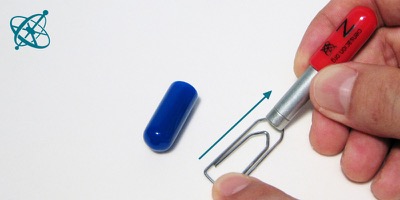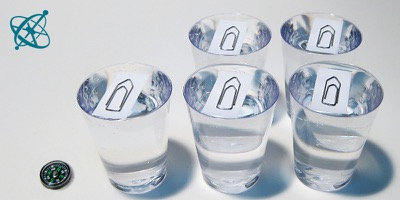 www.sciensation.org | Ciênsação hands-on experiments are published as Open Educational resources under a Creative Commons Attribution-ShareAlike 4.0 International License.
www.sciensation.org | Ciênsação hands-on experiments are published as Open Educational resources under a Creative Commons Attribution-ShareAlike 4.0 International License.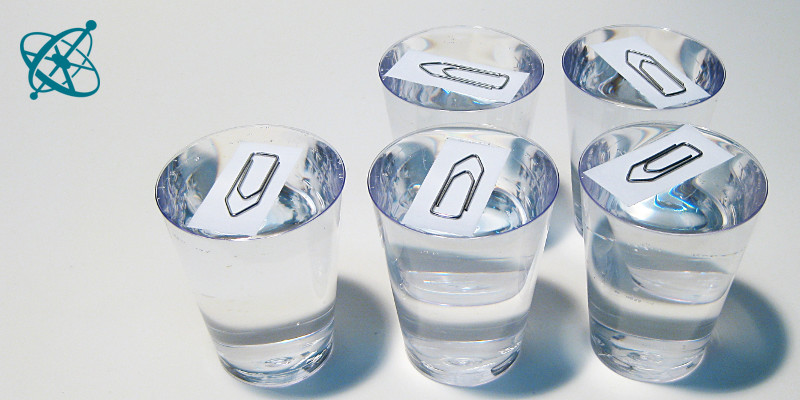
Ferromagnetic materials have randomly oriented magnetic domains.
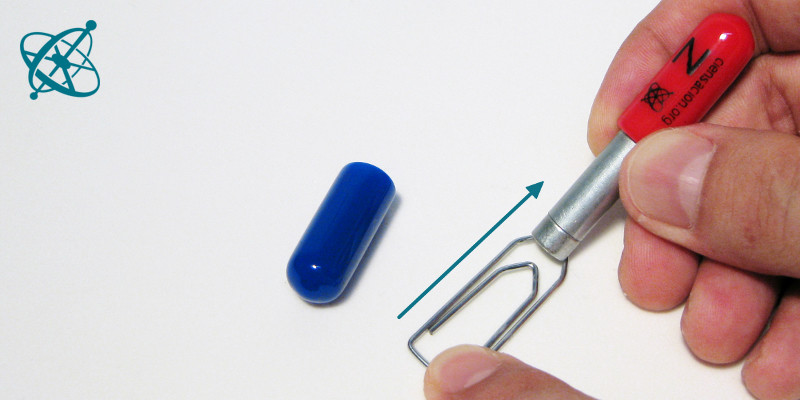
These domains align to an external magnetic field…
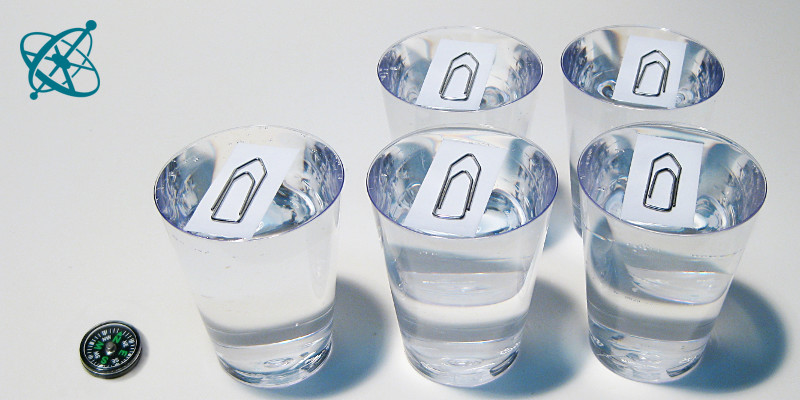
…like compass needles align to the Earth's magnetic field.
Find my direction magnetically
You often see this experiment done with needles. Please don’t do this with children, why take the risk? Use metallic paper clips instead – it is safer, the pointing better visible and the magnetizing effect even a bit stronger.
In this activity, the students' compasses double as model for the magnetic domains in ferromagnetic materials: Just like the paper clips at first point in random directions, but then align to the Earth's magnetic field, so do the domains in each paper clip align to the field of a strong magnet. Because some of the domains stay in this alignment, the paper clip becomes a magnet itself.
The needle of a compass is a small magnet that aligns with the Earth's magnetic field.
Ferromagnetic materials consist of tiny magnetic domains in random orientation. An external magnetic field can align them to form a magnet.
Once your students have their paper clip floating as seen in the photo, you should make them aware that the paper clips point in random directions.
Ask your students to recover the paper clip from the water glass and to put it on the table. Then take the 'South' pole of a strong magnet (e.g. a Ciênsação magnet without the blue protective cap) and swipe it slowly about 5 times along the paper clip, always toward it's pointing end. Let the students float their paper clips again.
Fill a cup with water to the brim. Then float a piece of paper with a paper clip on it.
1. What happens to the paper clip when the teachers swipes it with a magnet?
2. What force turns the magnetized paperclips while they float on water?
In what direction do the paper clips point after swiping the strong magnet over them?
› They point north.
How do the paper clips know where north is?
› They don't know it, but simply align to the Earth's magnetic field.
Why didn't the paper clips align to north before?
› Because they where not magnetic.
How did the swiping of the strong magnet turn the paper clips into magnets?
› In each paper clip are many small magnetic domains. The Earth's magnetic field is too weak to align them in one direction, but the strong magnet did.
After a few seconds, all the magnetized paper clips will point northwards – your students have built compasses.
Paper clips are made of ferromagnetic materials, which consist of tiny domains, or regions, which each is magnetized in some random direction – just like the paperclips which pointed in random directions in the beginning of the experiment. When you swipe with the strong magnet along the clip, some of these domains change their direction to align with the magnetic field and then remain in this orientation. Each paperclip thereby becomes a magnet of its own. The Earth's magnetic field applies a torque on these magnets, like the strong magnetic field did to the domains, and the clips align to the north direction. However, since the Earth's magnetic field is much weaker than that of the strong magnet, the clip has to be placed on a floating paper where it can rotate practically without friction.

